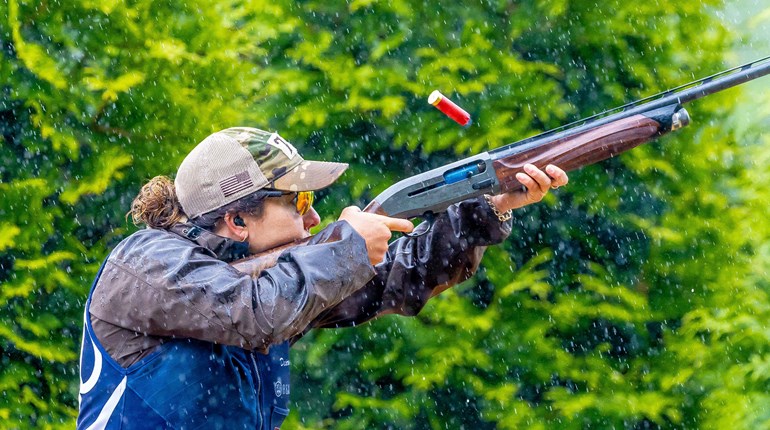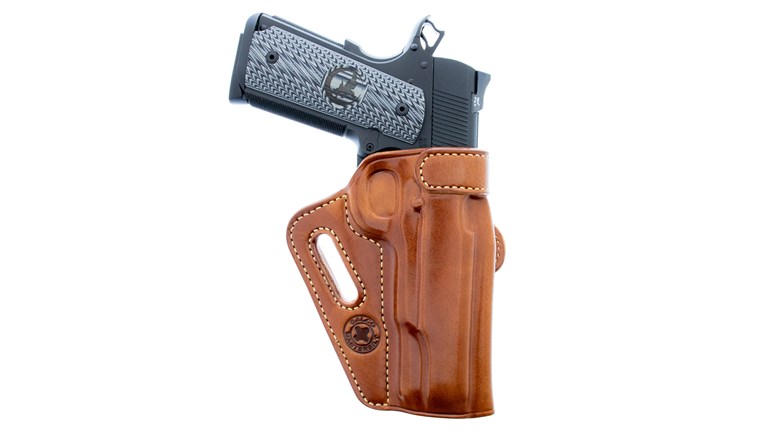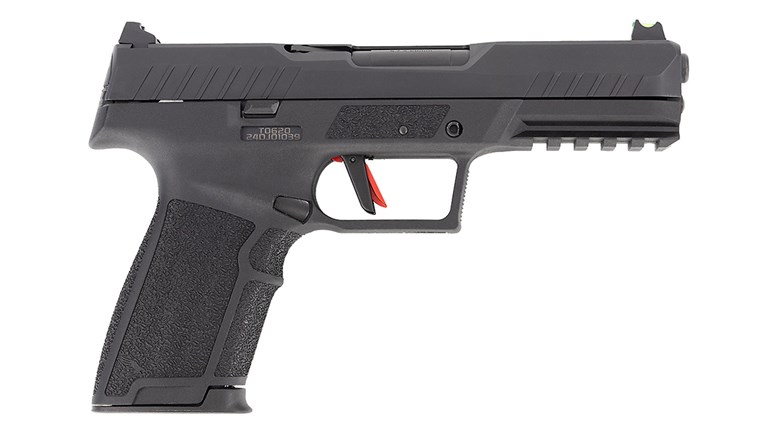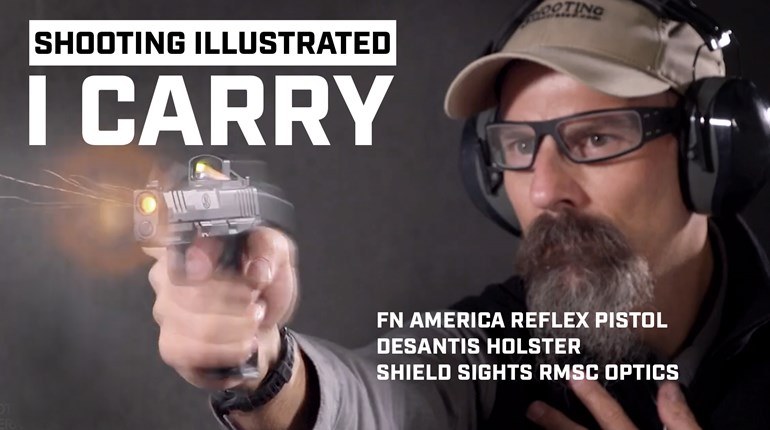
The Beretta 92 series is one of the most iconic handgun families of the "wonder-nine" era. In fact, it could even be its poster-child. This Italian 9mm double-action handgun ascended to fame after the US military replaced the legendary M1911A1 service pistol with it after the XM9 trials. Its military designation is “M9,” while commercially, it’s called the Beretta 92FS. Other than official government or military markings and [sometimes] cosmetic differences on frames, there are no fundamental differences between the military M9 and the commercial 92FS. In fact, both guns share 100-percent interchangeability in parts. The Beretta M9 and Beretta 92FS are the same gun, for all intents and purposes.
Beretta 92 Family Background
All Beretta 92-series pistols are descended from the Beretta 1951, the company’s first 9mm pistol. The 1951 married the locking-block delayed blowback action from the German-designed Walther P-38 9mm pistol, but kept the original Italian-styled open-top slide pattern, something found on Beretta handguns since 1915.
The very first Beretta 92 model saw the light of day in 1975. As an improvement over the 1951 series, this new pistol kept the same 9mm chambering and took both the locking-block and open-top slide from the Beretta 1951. It then combined those two elements with an aluminum-alloy frame that accepted a double-stack magazine. Most importantly, its frame positioned the top of the inserted magazine and top-most cartridge directly in line with the breech. Along with the classic open-top slide, this direct-feeding arrangement are two features which make the entire 92 series extremely reliable. The original Beretta 92 went through some permutations and model changes with parts like magazine catches and safeties being moved around its frame and evolved into the Beretta 92S by the late 1970s. A modified version of the 92S, the 92S-1, entered a US Air Force pistol trial in 1979, which it won. While this USAF event may not have been as significant as the main trials of the 1980s, Beretta got a lot of valuable information and feedback, so by the time the XM9 trials started, the company had continued to modify their 92S-1 design and developed the next model: the 92SB-F.
The 92SB-F, XM9 Trials and the 92FS
The Beretta 92SB-F, also known as the Beretta 92F, is the variant that solidified the classic Beretta 92 series as we see it today. The “F” in its name refers to “federal,” as in the US Federal Government. This suffix identified this specific model as the official entry into the XM9 trials. The 92SB-F/92F incorporated a bevy of additional features including a chrome-lined bore, a squared-off trigger guard and the signature blackened Bruniton epoxy finish. In order to become the old M911A1’s successor as the new military pistol, the Beretta 92SB-F bested other guns and ended up competing directly against the Sig-Sauer P226. While both the P226 and the Beretta 92 passed the trial’s reliability tests, Beretta clenched the contract by offering the government a better deal.

During the late 1980s, US Navy SEALs who were independently evaluating the 92F experienced injuries from the slides flying off the frames and striking the shooter in the face. These catastrophic malfunctions were later deemed to be caused by dangerously overloaded high-pressure 9mm NATO ammunition. Because these lots of ammunition were unfortunately dispersed throughout the military supply system and hard to isolate, Beretta modified the 92F to retain its slide in the event of a catastrophic malfunction. The modification consists of adding a larger diameter head to the hammer pin and cutting a groove into the rear left bottom edge of the slide. The edge of the oversize hammer pin rides inside the 2.5-inch long slide groove and will physically prevent the slide from moving further back in the event that the gun’s locking block fails. Existing military M9s were retrofitted with this fail-safe and all new military M9s and commercial pistols would include the fail-safe by default. These models were dubbed 92FS (S for Safety), and the rest became history because the 92FS specifications specifically became the standard from that point forward.
Are There Any Differences Between The M9 And The 92FS?

Once the 92SB-F design was fully codified into the 92FS spec, the guns Beretta was building were manufactured exactly the same way. Technically, Department of Defense acceptance marks are the way to discern a military pistol from a commercial gun. Any actual differences between the M9 and the 92FS will only be cosmetic. One can look at rear sights or frames and find some cosmetic differences between the M9 and the 92FS. M9 rear sights had a single white “half-dot” that is vertically aligned with the front sight’s dot for the proper sight-picture. The 92FS rear sight uses a double-dot rear sight for the classic three-white-dot sight-picture seen on most handguns. Other than the location of the white paint, there is nothing different about the sights. The majority of commercially-produced 92FS pistols made during the ‘90s and beyond were built with the updated frame profile that Beretta implemented shortly after rolling out the .40 S&W Beretta 96 in the early 1990s. The dustcover of these new frames has a subtle slope that differs from the original 92SB-F’s straight and parallel dustcover. The angle on this part of the frame reinforces it against the hotter .40 S&W cartridge. Likewise, the updated 92/96 commercial frame had the upper corner of the backstrap just ahead of the beavertail pared down (radiused) as a subtle way of improving ergonomics.
Even though this frame technically differs from the original pattern, it still retains 100-percent parts interchangeability. Many commercial 92FS models were still shipped out with the original-style 92SB-F/92F frame. Naturally all commercial 9mm pistols manufactured prior to the 96-frame update will have the original frame, but even after the 96-frame update, many commercial guns were built from parts leftover after M9 production runs. The M9 proper never saw these cosmetic frame changes because contract rules made it forbidden to tweak the original agreed-upon design.
The Takeaway
At the aggregate level, all differences between M9s and commercially produced 92FS models are basically cosmetic. Government markings will be the only true differentiator that hold any weight, but even then, does it matter in any practical sense when the parts are interchangeable and the guns operate exactly the same?
For collectors or military enthusiasts interested in a bona-fide military style M9, Beretta actually sells M9s commercially alongside the 92FS. This version ships with the original style dusctover frame, two-white-dot sights and even comes in a cardboard box, like the real military pistols. The majority of its markings even match government handguns, save for a few stampings and proof marks added by the Department of Defense.



































